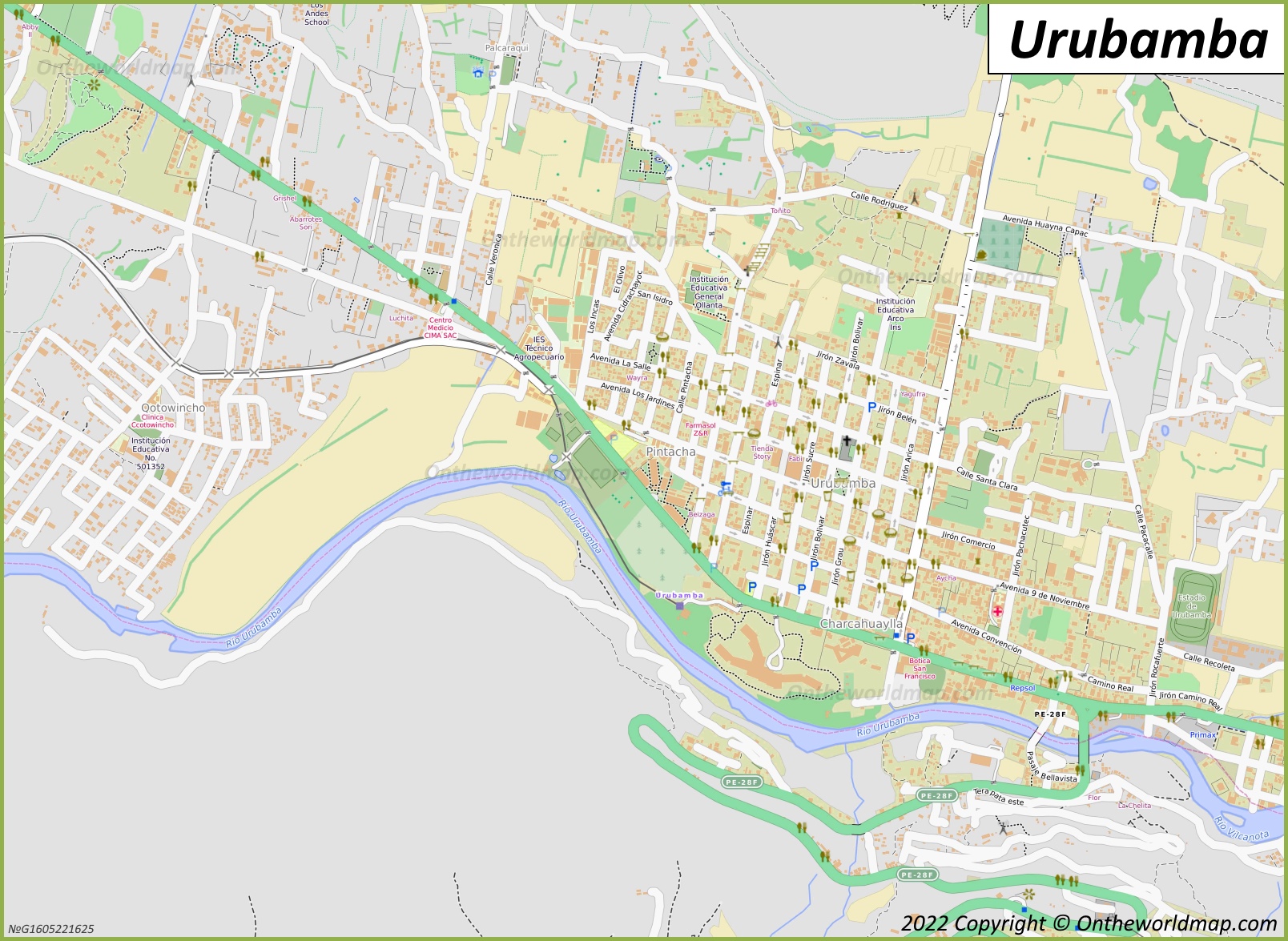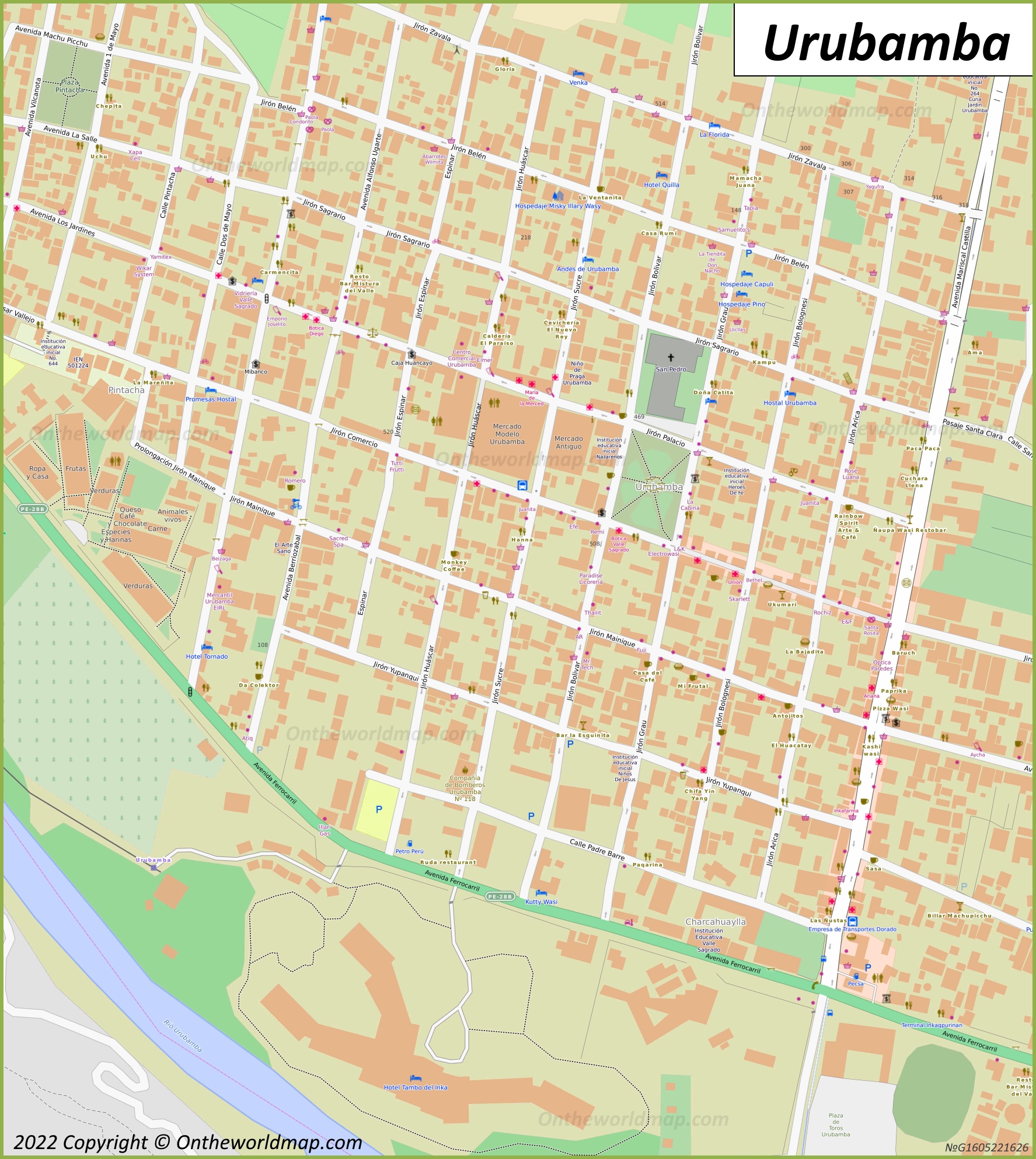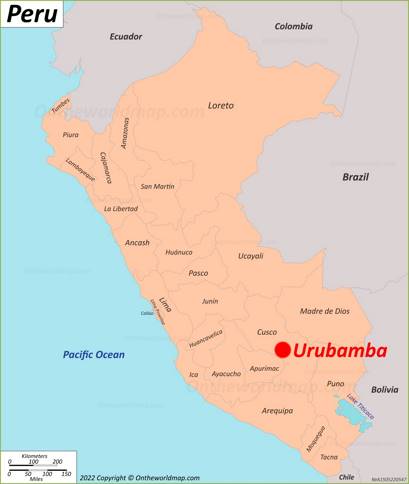Urubamba Map
Description:
Size: 1608x1175px / 737 Kb
Author: Ontheworldmap.com
Map based on the free editable OSM map openstreetmap.org.
You may download, print or use the above map for educational, personal and non-commercial purposes. Attribution is required. For any website, blog, scientific research or e-book, you must place a hyperlink (to this page) with an attribution next to the image used.
Description:
Size: 1775x1985px / 1.19 Mb
Author: Ontheworldmap.com
Map based on the free editable OSM map openstreetmap.org.
You may download, print or use the above map for educational, personal and non-commercial purposes. Attribution is required. For any website, blog, scientific research or e-book, you must place a hyperlink (to this page) with an attribution next to the image used.
Online Map of Urubamba
About Urubamba
Urubamba is a town in Peru's Sacred Valley, located in the Cusco Region at an elevation of approximately 2,871 meters (9,420 feet) above sea level. The town serves as the capital of both Urubamba Province and Urubamba District, situated about 57 kilometers northeast of Cusco city along the Urubamba River.

The town's strategic location in the Sacred Valley of the Incas makes it an important tourist destination and agricultural center. The Urubamba Valley, known as Willkamayu in Quechua, was highly valued by the Incas for its special geographical and climatic qualities. The fertile soil and favorable climate create ideal conditions for growing corn, quinoa, and various grains. Modern agricultural production includes corn, potatoes, and a variety of vegetables that supply markets throughout the region.
Several significant Inca sites surround Urubamba, including Moray, an archaeological site consisting of several terraced circular depressions that the Incas used as an agricultural laboratory to study crop growth in different microclimates. The nearby Salineras de Maras (Maras Salt Pans) features thousands of salt evaporation ponds that have been used since pre-Inca times and continue to produce salt today. These ancient salt mines consist of approximately 3,000 small pools constructed on the slope of the mountain Qaqawiñay.
Urubamba serves as a common stop for travelers visiting Machu Picchu and other archaeological sites in the Sacred Valley. The town features various hotels, ranging from luxury resorts to boutique accommodations, and restaurants serving both traditional Andean and international cuisine. The local market, particularly active on Wednesdays and Sundays, provides insights into daily life in the Sacred Valley and offers local produce, textiles, and handicrafts.
Transportation to Urubamba is facilitated by regular bus and taxi services from Cusco. The town is also accessible via the Peru Rail train service that connects Cusco to Machu Picchu, with a station in Urubamba. The climate is generally mild throughout the year, with average temperatures ranging from 11°C to 23°C (52°F to 73°F), making it an attractive destination for tourism and agricultural activities. The rainy season typically occurs from November to March, while the dry season extends from April to October.
The Facts:Region: Cusco.
Population: ~ 15,000.



